
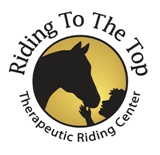
Riding To The Top Therapeutic Riding Center
14 Lilac Dr.
WINDHAM, ME 04062
Mailing Address:
14 Lilac Dr.
WINDHAM, ME 04062
Phone: 207-892-2813
MAKE AN INQUIRY
View our WEBSITE
EIN: 01-0482069Founded: 1993
View our PHOTO GALLERY
Profile Last Updated December 31, 2025Public Charity
Click here to view listing(s) of the program horses we are seeking
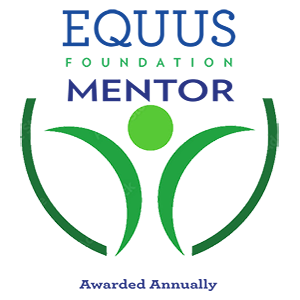
The Mentor Accreditation is awarded annually to an organization that operates at the highest standards for business and equine welfare practices in accordance with EQUUS Foundation guidelines for business and equine welfare practices outlined here.
Last Updated: May 31, 2025
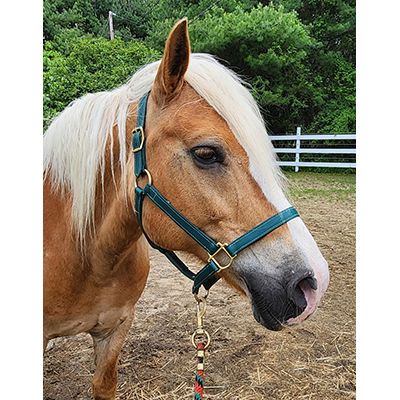
MISSION & PROGRAMS
Mission:Riding To The Top Therapeutic Riding Center ("RTT") is a non-profit, 501(c)(3) organization dedicated to enhancing health and wellness through equine-assisted services (EAS). Founded in 1993, RTT purchased our own 50 acre property in Windham, ME in 1998 giving us autonomy in the care of our horses and the development of our programs.
Our organization conducts Equine Assisted Services in accordance with the EQUUS Foundation Guidelines on Qualifications of Organizations Conducting Equine Assisted Services (EAS).
Our organization provides outreach and/or public education programs involving horses.
100% of our total programs and services are equine-related.
Our organization is directly responsible for the care and shelter of equines involved in our programs.
Our organization does not CURRENTLY use satellite, overflow, foster, and/or outreach facilities.
Please describe what steps your organization takes to ensure that:
1) all interactions between your equines and people are mutually beneficial and conducted in accordance with the Guidelines for Human-Equine Interactions stated below;
2) all equines in the care of our organization and/or equines that participate in the organization's program have access to clean drinking water at all times; nutritious food in sufficient quantity, including natural forage such as pasture grass and/or hay; appropriate veterinary, farrier, and dental care; shelter and protection from the weather; sufficient safe space to move around comfortably on a daily basis; and daily opportunity to freely interact and have contact with other equines:
Riding To The Top Therapeutic Riding Center (RTT) prides itself on the care of our herd members. Our horses are selected carefully for the work that we do at RTT, as we know that in the EAS industry, we have a lot of humans interacting with our horses, which is not for every horse. Ensuring that the fit is good for RTT AND the horse is of utmost importance. Our Equine Manager is responsible for acquisition and training of our herd members, and she works closely with our instructors and schooling team members to bring members into the RTT herd (after quarantine) and to slowly acclimatize them to our work. In general, we allow 45-60 days for a horse to settle in to our environment, but on occasion the trial period is extended.
There are many “eyes on” our horses while they are out with their herd members and during lessons—from our staff and instructors, to our trained volunteers—and we reinforce to all, that our horses are living, breathing beings who deserve the utmost respect and care. We have an active body work team that works with our horses utilizing Reiki, acupressure and Masterson techniques, and in 2023 we purchased a Bemer Blanket which is used regularly by staff and volunteers with our herd members before or after lessons. We also work closely with our veterinarians, not only for regular well-care (vaccinations, annual exams, etc.) but also for chiropractic and acupuncture treatments as needed.
In general, our horses are managed in herds of 2-5, and for those who require individual turn out, they have other horses adjacent to their paddock for support. Over the past ten years, we have moved to having horses turned out 24/7 with shelters available to them for protection from wind, rain and snow. For horses, being able to move about freely with their herd members is vital to their overall health and well-being. Water is available 24/7 and hay is fed four times daily, with additional feedings during extremely cold weather. During warmer weather, those who can be turned out on grass are able to be on our grass fields for several hours per day.
Horse workloads are carefully monitored by our Equine Manager to ensure adequate down time from arena/lesson work. At the same time, our Equine Manager also oversees a group of roughly 10 volunteer schoolers who work with our horses 1-2 times per week to maintain their overall fitness (physically and mentally). This team of volunteers contributed over 850 hours of time to schooling and body work for our herd in 2024. Schooling “prescriptions” usually include unmounted and mounted exercises.
In 2024, our average herd age decreased, while our herd size increased. We know that there needs to be options when a horse needs time off for rest or recovery, and our herd has great depth to accommodate these needs. These decisions are managed by our Equine Manager, in concert with our other equine staff and instructors and when indicated, our veterinarians.
In all of our work with our horses, our staff and instructors seek to demonstrate respectful relationships with our horses—from greeting them at the start of a lesson, to their warm up, lesson time and cool down, and finally to our gratitude (and frequently treats) at the end of lessons.
Equine Assisted Services (EAS) Overview:
Overview of our programs involved with providing EAS to individuals with special needs:
At Riding To The Top we provide services to individuals who have a wide range of diagnoses that include, but are not limited to, cerebral palsy, brain injury, autism, learning disabilities, multiple sclerosis, PTSD, depression, anxiety, ADHD, Down syndrome and developmental delays. RTT is a Premier Accredited Center with PATH Intl. having held this distinction since 2000.
More than 250 people with disabilities, ages 3-85+ are served each year through individual and group lessons. Riding To The Top offers a variety of services for our clients depending on their individual needs. Services include therapeutic riding, Equine Assisted Learning programs, therapeutic carriage driving and PT/OT services utilizing equine movement. In 2024, we provided nearly 3,000 client visits at the farm and through remote field trips where we traveled to area schools or residential facilities.
Therapeutic Horsemanship--Mounted (TR) and Unmounted (GW): Our TR/GW program is our largest program and serves children and adults. Activities include grooming, tacking and riding skills to help individuals improve their physical strength, cognitive and sequencing skills, and social interactions. For individuals who do not want to ride or are unable to ride, we offer unmounted ground work. We offer these services to individuals as well as groups from day programs and schools.
Equine Assisted Learning (EAL): RTT provides in-person learning working closely with school educators on student goals and areas of study. RTT has developed learning modules that complement school goals and shares equine-related learning with students in conjunction with their teachers and ed techs. In 2024, RTT worked in-person with students from area schools, in conjunction with school educators who attend the sessions with their students.
Therapeutic Carriage Driving (TCD): Previously, we had two PATH Intl. certified Driving Instructors who due to personal reasons, have not been able to continue with consistent teaching hours at RTT but who are available on a consultative basis. We presently have a PATH Intl. CTRI, who is also certified as a driving instructor with the Carriage Association of America (CAA), who works with our small driving program. Due to her CTRI credential and her CAA Driving Instructor certification, we have opted to continue this small program as quality and safety have been maintained with our instructor's background with PATH Intl. as a CTRI and her training and instructor certification through CAA.
Physical Therapy services utilizing equine movement are provided to a small population of clients at RTT who benefit from the physical and sensory input of the horse's movement to assist in neuro-developmental skills. We also have an Occupational Therapist who is pursuing her AHA certification and works under the supervision of our PATH Intl. Registered Therapist.
We also offer field trip experiences, staff and volunteer education related to EAS and equine related clinics that have benefit for our staff, horses and the general public. Educational offerings include:
• PATH Intl. mentoring program for Instructors In Training;
• Advanced program-specific volunteer trainings; and
• Clinics/Workshops on equine topics including Natural Horsemanship, Acupressure/Reiki, Masterson Energy Work and Equine Health and Nutrition.
Equine Assisted Services (EAS) and Providers:
Our organization provides the following Equine Assisted Services (EAS):
Adaptive/Therapeutic Riding
Adaptive/Therapeutic Driving
Adaptive/Therapeutic Unmounted Horsemanship
Occupational Therapy/Physical Therapy/Speech-Language Pathology
Equine-assisted Learning in Education
9: Total number of Equine Assisted Service Providers at Riding To The Top Therapeutic Riding Center
1 Kate Jeton
FACILITY PARTICIPATION:
Riding To The Top Therapeutic Riding Center
RELATIONSHIP: Employee
SERVICES PROVIDED:
Adaptive/Therapeutic Riding
Adaptive/Therapeutic Unmounted Horsemanship
DEGREES, LICENSES AND/OR CERTIFICATIONS
Kate is a life long horse woman who has competed in jumping and equitation. She is a PATH Intl. CTRI and an Equine Specialist in Mental Health and Learning. She has a background in education and administration. When she works with our school groups she collaborates with the teacher(s) from each classroom.
2 Kristin Meaney
FACILITY PARTICIPATION:
Riding To The Top Therapeutic Riding Center
RELATIONSHIP: Employee
SERVICES PROVIDED:
Adaptive/Therapeutic Riding
Adaptive/Therapeutic Unmounted Horsemanship
DEGREES, LICENSES AND/OR CERTIFICATIONS
Kristin has a degree in Equine Management and Business and is PATH Intl. CTRI and Mentor. She is RTT's Equine Manager and oversees the health and fitness of our horses and supervises RTT's Volunteer Schooling Team. In 2024, Kristin completed the PATH Intl. EAL course.
3 Lisa Messina
FACILITY PARTICIPATION:
Riding To The Top Therapeutic Riding Center
RELATIONSHIP: Employee
SERVICES PROVIDED:
Adaptive/Therapeutic Riding
Adaptive/Therapeutic Unmounted Horsemanship
DEGREES, LICENSES AND/OR CERTIFICATIONS
Lisa is a PATH Intl. CTRI. She has a long history of horse ownership and was a long time volunteer at Riding To The Top before becoming certified in 2021. She also has a background as a BHP and worked for organizations serving individuals with developmental disabilities.
4 Mackenzie Foss
FACILITY PARTICIPATION:
Riding To The Top Therapeutic Riding Center
RELATIONSHIP: Employee
SERVICES PROVIDED:
Adaptive/Therapeutic Riding
Adaptive/Therapeutic Unmounted Horsemanship
DEGREES, LICENSES AND/OR CERTIFICATIONS
Mackenzie (Kenzie) graduated from the University of New Hampshire with a BS in Therapeutic Riding in May 2023. She is a PATH Intl. CTRI and works part time for RTT teaching therapeutic riding and unmounted activities.
5 Marissa LaGassey
FACILITY PARTICIPATION:
Riding To The Top Therapeutic Riding Center
RELATIONSHIP: Employee
SERVICES PROVIDED:
Adaptive/Therapeutic Riding
Adaptive/Therapeutic Unmounted Horsemanship
Equine-assisted Learning in Education
DEGREES, LICENSES AND/OR CERTIFICATIONS
Marissa is PATH Intl CTRI and Equine Specialist in Mental Health and Learning. In addition, she holds an education degree and is licensed in the state of Maine to teach secondary education (Math). She works full time teaching 9th grade mathematics at a local public school and is our Summer Camp Director.
6 Sara Gagliarducci, OTR/L
FACILITY PARTICIPATION:
Riding To The Top Therapeutic Riding Center
RELATIONSHIP: Employee
SERVICES PROVIDED:
Adaptive/Therapeutic Riding
Adaptive/Therapeutic Unmounted Horsemanship
DEGREES, LICENSES AND/OR CERTIFICATIONS
Sara is a PATH Intl. CTRI. She is a licensed OT in the state of Maine and she brings her skills and training as an Occupational Therapist to her therapeutic riding and unmounted horsemanship lessons at Riding To The Top. Sara has completed the Level I AHA workshops and hopes to sit for her AHCB Hippotherapy Certification Exam in 2025. She works under the supervision of Sarah Bronson, PT (PATH Intl. Registered Therapist) and is working towards becoming a PATH Intl. Registered Therapist.
7 Sarah Bronson, PT
FACILITY PARTICIPATION:
Riding To The Top Therapeutic Riding Center
RELATIONSHIP: Employee
SERVICES PROVIDED:
Adaptive/Therapeutic Riding
Adaptive/Therapeutic Unmounted Horsemanship
Occupational Therapy/Physical Therapy/Speech-Language Pathology
DEGREES, LICENSES AND/OR CERTIFICATIONS
Sarah is a licensed physical therapist in the state of Maine and a PATH Intl. CTRI and Registered Therapist. She teaches therapeutic riding and sees a few clients for physical therapy utilizing the movement of the horse.
8 Sister Ann Thompson
FACILITY PARTICIPATION:
Riding To The Top Therapeutic Riding Center
RELATIONSHIP: Independent Contractor
SERVICES PROVIDED:
Adaptive/Therapeutic Riding
Adaptive/Therapeutic Driving
Adaptive/Therapeutic Unmounted Horsemanship
DEGREES, LICENSES AND/OR CERTIFICATIONS
Sister Ann is a PATH Intl. CTRI and holds the Carriage Association of America Driver Proficiency Program Certification. Sister Ann is also a PATH Intl. CTRI. In addition, she is a licensed Music Therapist.
9 Tracy Sturtevant
FACILITY PARTICIPATION:
Riding To The Top Therapeutic Riding Center
RELATIONSHIP: Employee
SERVICES PROVIDED:
Adaptive/Therapeutic Riding
Adaptive/Therapeutic Unmounted Horsemanship
Equine-assisted Learning in Education
DEGREES, LICENSES AND/OR CERTIFICATIONS
Tracy is a PATH Intl. CTRI and holds a degree in Special Education. At RTT she combines her love of horses and educating children (and adults) with disabilities. She teaches both mounted and unmounted lessons.
Outreach and/or Public Education:
We work to increase awareness about the benefits of EAS through community education and outreach via mobile field trips to community locations including hospitals, nursing homes, Children’s Story Hour (library) and adult networking events (volunteer recruitment). We also host 5 weeks of integrated Summer Camp programming which is run by a dually certified educator and CTRI. In addition, we participate in our local SummerFest Parade whenever possible with our two minis and a small pony.
Research/Medical Use of Equines:
Our organization has made equines available for research studies or medical training.
Please explain where and for what purpose equines are/were provided to use in research or medical training.
Each year we host a practicum for Veterinary Tech students that involves observation, taking vitals and techniques for bloodwork and vaccinations (venipuncture and placebo IM injections). Horses are monitored closely by RTT staff and the veterinarian(s) who instruct the class and herd members are rotated to limit the number of "shots" or venipunctures. Given the veterinarian shortage we feel that this continues to be an important collaboration for Veterinary Technicians who will be assisting our equine veterinarians in the coming years.
Religious Affiliation:
Our organization does not promote religious education, religious purposes, or a specific religious faith or use donations for religious education or religious purposes; require participants to be of a certain faith; require participation in religious, instruction, activities or services; or require participation in prayer, worship, religious instruction or other religious activities as a condition of receiving social or secular services offered.
Auction Donation:
Our organization has never allowed, or would not consider allowing, an equine to be sold, transferred, released, or otherwise placed into possession of any person or organization that would cause or allow the equine to be sold at auction for slaughter.
POLICIES: INTAKE, ASSESSMENT & TRAINING
Prior to a horse being accepted and/or arriving at the facility, the organization has the following policies in place:The owner of a potential equine is interviewed over the phone or in person prior to seeing the equine
The equine is evaluated at its place of residence
The owner completes an application/contract which constitutes the agreement between the owner and our organization when the equine is acquired from the equine's owner other than by seizure or by abandonment
The owner is financially responsible for the shipping of the equine to and from the organization
If health records are not available or are out-of-date, our veterinarian will administer appropriate vaccinations
A health certificate signed by a veterinarian and dated no more than seven days prior to arrival is provided to our organization either prior to or upon arrival of the equine attesting to the health status of the equine
Trial Period: Check all that apply:
Equines are on trial for up to 30 days
Equines are on trial up to 60 days
Equines are on trial for 60 or more days
The trial period may be reduced based on the equine's progress
During the trial period, the organization accepts total financial responsibility for the care of the equine, including board, feed, shoeing and any necessary veterinary care
During the trial period, the organization accepts financial responsibility for the care of the equine, including board, feed, shoeing and any necessary veterinary care, up to a fixed amount agreed upon by the organization and the owner
During the trial period, the owner/donor is financially responsible for the care of the equine, including board, feed, shoeing and any necessary veterinary care
The trial period may be terminated by either the organization or the owner for any reason
Upon intake, the organization has the following quarantine policy in place:
The equine is confined to a designated and separate area for isolation and quarantine at the facility for a prescribed period of time
The equine is confined to a designated and separate area for isolation and quarantine off-site for a prescribed period of time
The equine is not quarantined
The typical length of quarantine is: 10 to 20 days
Following arrival of the equine at the facility, the following is performed:
Physical examination to include temperature, pulse and respiration by a trained staff member upon arrival
A Henneke Body Conditioning Score or other body conditioning score is assigned by a trained staff member upon arrival
Photographs are taken of each equine upon arrival at the facility and kept with the equine's health records
Physical examination to include temperature, pulse and respiration by a veterinarian upon arrival
A Henneke Body Conditioning Score or other body conditioning score is assigned by a veterinarian upon arrival
Physical examination by a farrier
Physical examination by a dentist
The equine is microchipped if the equine has not been microchipped
Horses are assessed for following skills and behaviors:
Retrieval from a pasture/paddock
Leading with a halter and lead rope
Temperament, disposition and attitude, such as rated from very calm to very high spirited
Saddling
Bridling
Lunging
Loading onto and unloading off a trailer
Mounting and dismounting
Riding at the walk
Riding at the trot
Riding at the canter
Riding by a beginner and/or unbalanced rider
Driving (Pulling a carriage)
Tolerance to unusual objects and loud noises
Known vices, i.e., cribbing, biting, kicking, weaving, stall walking, etc
Grooming
Bathing
Tolerance to multiple handlers at the same time
Jumping
Clipping
Our organization has the following policies and procedures in place pertaining to the ongoing assessment of horses in its care:
Physical examination by a veterinarian at least annually
The Henneke Body Condition score or other body conditioning score is updated at least annually by the veterinarian
Vaccinations are administered at least annually
Photographs are taken of each equine annually and kept with the equine's health records
Equines at our facility may be treated by an equine chiropractor
Equines at our facility may be treated by an equine acupuncturist
Equines at our facility may be treated by an equine massage therapist
Equines at our facility may be treated by an equine nutritionist
The Henneke Body Condition score or other body conditioning score is updated at least annually by a trained staff member
Photographs are taken of each equine monthly and kept with the equine's health records
Our organization has the following policies and procedures in place pertaining to the weight-carrying or workload capabilities of horses/equines that are ridden in our care:
Our organization evaluates the weight-carrying and workload limitations for each equine that is ridden at least annually
Our organization maintains a written record of the weight-carrying and workload limitations for each equine that is ridden
Our organization does not evaluate the weight-carrying and workload limitations for each equine that is ridden
No equines are ridden; not applicable
The following variables are considered in determining the weight-carrying and workload limitations for each equine that is ridden:
Equine age, weight, breed, body condition, fitness, balance, health and soundness
Equine conformation to include the top line, length of back, strength and width of loin, bone density (measured by the circumference of the cannon bone just below the knee)
Size, shape, condition and angle of the hooves
Participant weight, height, body proportions, balance, fitness and riding skills as well as behavioral issues and safety concerns
Weight and proper fit of the saddle and other equipment
Terrain and footing in the working environment
Duration and frequency of working sessions, as the frequency with which an equine is subjected to maximum weight carrying and/or workload
Nature and pace of work, repetitive or varied, radius of turns, degree of incline and regularity of footing when equine is subject to maximum weight-carrying capacity
Temperature and/or weather conditions
Seasonal impact on the equines' workload and weight-carrying capabilities and limitations
Our organization does not evaluate the weight-carrying and workload limitations for each equine that is ridden
No equines are ridden; not applicable
Horses provided formal training (groundwork or riding): Weekly
Additional information about our intake, assessment & training policies and practices:
In several of the sections above, we checked off seemingly contradictory statements. This is because our trial period agreement may be tailored to the individual horse/owner situation re: length of trial and RTT covering the costs of care versus the owner. This often depends on the horse's most recent work history and whether we anticipate needing a longer period of time to get a horse into shape for our programs. Vitals are assessed by our staff upon arrival and an examination by our vet occurs with any new acquisitions/trial horses. A fecal sample is taken on arrival and worming needs are determined following fecal test results.
We also require that horses coming for trial have current vaccines, Coggins and a Lyme/Tick Borne diseases test before coming to the farm and if the Lyme/Tick Borne diseases test is positive, the owner is responsible for the cost of treatment.
Full pre-purchase exams are conducted on any horses being purchased by RTT. Prior to horses being accepted for lease or donation our veterinarian examines them.
We have a retired equine veterinarian who is on our Board who works with our Equine Manager and Equine Care Coordinator on at least a monthly basis, reviewing Body Condition Scores for our herd to help address their nutritional needs. We take photos annually of all horses, and for some who are being more closely monitored, we take monthly photographs.
Lastly, schooling occurs 1-3 times per week depending on the horse and their needs. This may be a combination of ground and ridden work.
POLICIES: BREEDING
The organization has the following policies related to breeding and stallions:Our organization does not conduct breeding of equines owned or under the care of our organization.
Our main facility where our organization conducts its programs does NOT breed equines.
One or more of the facilities where our organization conducts its programs, including foster/temporary care facilities, breeds equines
One or more of the facilities where our organization conducts its programs, including foster/temporary care facilities, are permitted to house stallions
POLICIES: EUTHANASIA
The organization has the following policies related to euthanasia:Our organization will never have an equine euthanized for space
Our organization will have an equine euthanized upon the recommendation of the veterinarian if the equine is a threat to itself, other equines, or people
Our organization will have an equine euthanized upon the recommendation of the veterinarian after all reasonable treatment options have been explored
Euthanasia is done on site when possible to decrease trauma from transport
Euthanasia is done at the veterinarian's facility
Disposal of the carcass is handled within 24 hours
Our organization will never have an equine euthanized under any circumstances
The following are authorized to administer the procedure for your organization in accordance with state laws:
Veterinarian
A certified euthanasia technician
Senior staff with appropriate training
Employee of animal control shelter or humane society with appropriate training
Veterinary student under the supervision of a licensed veterinarian
Not applicable. Our organization prohibits euthanasia under any circumstances
Additional information about our euthanasia policies and practices:
In situations where a horse has chronic health issues that are painful or an acute situation arises (e.g. colic), consultation with our equine veterinarian will occur to discuss humane management of the horse considering pain and suffering, overall health and condition, potential for recovery, etc. In the event that pain and suffering will likely continue and/or treatment options are not prudent for the horse based on age, co-morbidities, etc., RTT will consider euthanasia in consultation with our veterinarian. In the event of a free-leased horse, this decision is made by the owner in conjunction with the veterinarian and RTT. At all times, RTT will defer to our veterinarian's recommendations re: euthanasia, including an otherwise healthy horse that is a danger to itself and/or other horses or humans.
In the event that a horse has been transported for additional work up to a veterinary hospital, the horse may be euthanized at the hospital versus at the farm if it is determined that this is best for the horse.
POLICIES: RE-HOMING
View Re-homing AgreementOur organization has the following re-homing (adoption/purchase) policies and procedures in place:
All potential adopters/purchasers complete a written contract which constitutes the agreement between our organization and the new owner
Our organization does NOT re-home an equine to first time equine owners
Potential adopters/purchasers must visit our organization and be observed with the equine on site
The distance of a potential adopter/purchaser's home from our facility is a consideration for when re-homing an equine
Our organization conducts a site visit of the adopter/purchaser's facility before the transfer of the equine to the adopter/purchaser's facility
Our organization will only re-home an equine to a location where another equine resides
Potential adopters/purchasers are encouraged to do a short-term, on-site foster with the equine
Adopters/purchasers are NOT required to provide updates
Our organization has the following policies and procedures related to horses that need to be retired, are no longer able to contribute to the mission of the organization, and/or are no longer manageable:
Equines may remain at our organization for their lifetimes
Equines may be found suitable homes by our organization
Equines may be returned to their owners
In the case an equine is unmanageable and demonstrates repeated dangerous behaviors, the equine may be euthanized upon the recommendation of the veterinarian
In the case an equine is unsound and/or unhealthy and cannot be treated to relieve suffering, the equine may be euthanized upon the recommendation of the veterinarian
The organization will accept financial responsibility for equines in the current care of the organization that need to be retired or are no longer able to contribute to the mission of the organization if all alternatives have been explored to find the equine an appropriate placement and space is not available for the equine to remain at the organization.
Equines may be sent to auction
If a suitable home cannot be located within 12 months, the equine may be euthanized
The uploaded Re-homing agreement includes the following re-homing (adoption/purchase) statements:
The agreement reflects that any individual or organization in possession of the equine as of the date of the agreement and any time thereafter is bound to not sell the equine at auction for slaughter or allow the equine to be sold, transferred, released, or otherwise placed into possession of any person or organization that will cause or allow the equine to be sold at auction for slaughter.
The agreement states that should the adopter decide to re-home the equine, the adopter must grant the organization first right of refusal prior to the equine being placed into the possession of any individual or organization intending to take possession of the equine for any reason.
The agreement states that should the adopter decide to re-home the equine, our organization must be notified of the name, address, and telephone number of any individual or organization intending to take possession of the equine for any reason prior to the equine being placed into the possession of such individual or organization.
The agreement states that should the adopter decide to re-home the equine, our organization must grant approval of any individual or organization intending to take possession of the equine for any reason prior to the equine being placed into the possession of such individual or organization, including being provided written notification of the name, address, and telephone number of any individual or organization intending to take possession of the equine for any reason.
The agreement states that the terms of our organization's agreement will be binding on any future individual or organization taking and/or in possession of the equine for any reason.
The agreement states that the re-homed equine CANNOT be sold, adopted, transferred, auctioned, released, given away, or otherwise placed into the possession of another individual or organization under any circumstances and must be returned to our organization should the adopter decide that he/she is no longer able, or no longer wishes, to care for the equine.
The agreement states that re-homed equines cannot be bred
The agreement states that if there is any breach of contract the equine must be returned to our organization
The agreement states that our organization reserves the right to make unannounced visits
The agreement states that our organization reserves the right to make scheduled visits
The agreement states that adopters/purchasers can return an equine to our organization free of charge
The agreement states that adopters/purchasers can return an equine to our organization for a fee
The agreement states that adopters/purchasers are required to provide updates (photos, vet records) for one year
The agreement states that adopters/purchasers are required to provide updates (photos, vet records) for two years
Our organization microchips all equines that are not already microchipped before the adoption and/or transfer of the equine if the organization has the authority to microchip the equine.
The agreement includes the microchip number of the equine.
The agreement states that adopters/purchasers are required to provide updates (photos, vet records) for as long as the adopter/purchaser is responsible for the care of the equine
None of the statements are included.
The organization does not re-home equines under any circumstances; our organization retains custody of our equines and ensures care of the equines for their lifetimes.
Our organization does not have the authority to transfer ownership and/or does not own any of the equines involved with our programs.
Our organization requires references from the following:
Veterinarian
Farrier
Personal/Other
Not applicable or no references required.
Transfer of ownership occurs: Immediately (at the time of adoption/purchase) or less than one year
The average equine re-homing (adoption/purchase) fee received by your organization:
Over $1,500
Additional information about our rehoming policies and practices:
Our placement of horses includes those who are ready for retirement from EAS or those horses who we have purchased and after a period of time (usually up to a year) we determine that they are not well suited for EAS. In the case of retirement we are committed to finding forever homes for horses who have worked so hard for our program. In this situation, we generally transfer ownership to the person who is taking over care, but on occasion, we have done this as a free lease arrangement. For horses that we have purchased, we most often will sell them to a suitable owner. In all cases, references are checked. We agree that a "free horse" is not free; however our placements have been to homes where the standard of care is very high, the individual has the financial capacity to care for the adoptee, and are well-known to the organization. While we do not have space to necessarily retire all horses on site, we do manage this on a case by case basis and in the event that we feel that retirement is best on site, we make this happen.
EQUINE CARE & SHELTER/FACILITY INFORMATION
Our organization does not CURRENTLY use satellite, overflow, foster, and/or outreach facilities.Total facilities at which our organization cares for and shelters horses used in our programs: 1
Riding To The Top Therapeutic Riding Center
14 Lilac Dr. Windham ME 04062
Currently operational
Total number of horses/equines currently involved with your programs, under your care, and/or owned by your organization at this facility: 16
Total number of horses at this facility NOT INCLUDING those counted above: 1
Maximum capacity of horses at this facility: 20
Does your organization own, lease or use a part of this facility? Own
Provide the contact information for the individual or organization responsible for investigating abuse in the county where the facility is located, including mailing address, email address, and phone information.
Maine State Animal Welfare Program. Contact info: 207-287-3846 or 1-877-269-9200; email: animal.welfare@maine.gov; Physical Address: Deering Building, 90 Blossom Ln., Augusta, ME 04330
Does your organization conduct Equine Assisted Services (EAS) at this facility in accordance with the EQUUS Foundation Guidelines on Qualifications of Organizations Conducting Equine Assisted Services (EAS)? Yes
Total number of Equine Assisted Service Providers AT THIS FACILITY, including instructors, specialists, therapists, counselors, coaches and/or facilitators (full-time, part-time, volunteer, independent contractors, and/or providers accompanying clients) that conduct Equine Assisted Services (EAS) in accordance with the EQUUS Foundation Guidelines on Qualifications of Organizations Conducting Equine Assisted Services (EAS) AT THIS FACILITY: 9
Equine Assisted Service Providers Assigned to this Facility: (see Equine Assisted Service Provider Section below for details)
1. Kate Jeton
2. Kristin Meaney
3. Lisa Messina
4. Mackenzie Foss
5. Marissa LaGassey
6. Sara Gagliarducci, OTR/L
7. Sarah Bronson, PT
8. Sister Ann Thompson
9. Tracy Sturtevant
Veterinarian Information: Riding To The Top Therapeutic Riding Center (*Main) Currently operational
Veterinarian: Rachel Flaherty
Clinic Name: Back Cove Equine Veterinary Services
PMB 1243
Portland ME 04103
Phone: 207-232-4316
Grounds: Riding To The Top Therapeutic Riding Center (*Main) Currently operational
Total acreage dedicated specifically to the horses: 15
Our organization has use of the following at this facility:
Structures/Barns: 1 Run-in sheds: 7
Pastures: 3 Paddocks/Pens/Turnout Areas: 8
Uncovered Outdoor Rings: 2 Covered Outdoor Rings: 0 Indoor Rings: 1
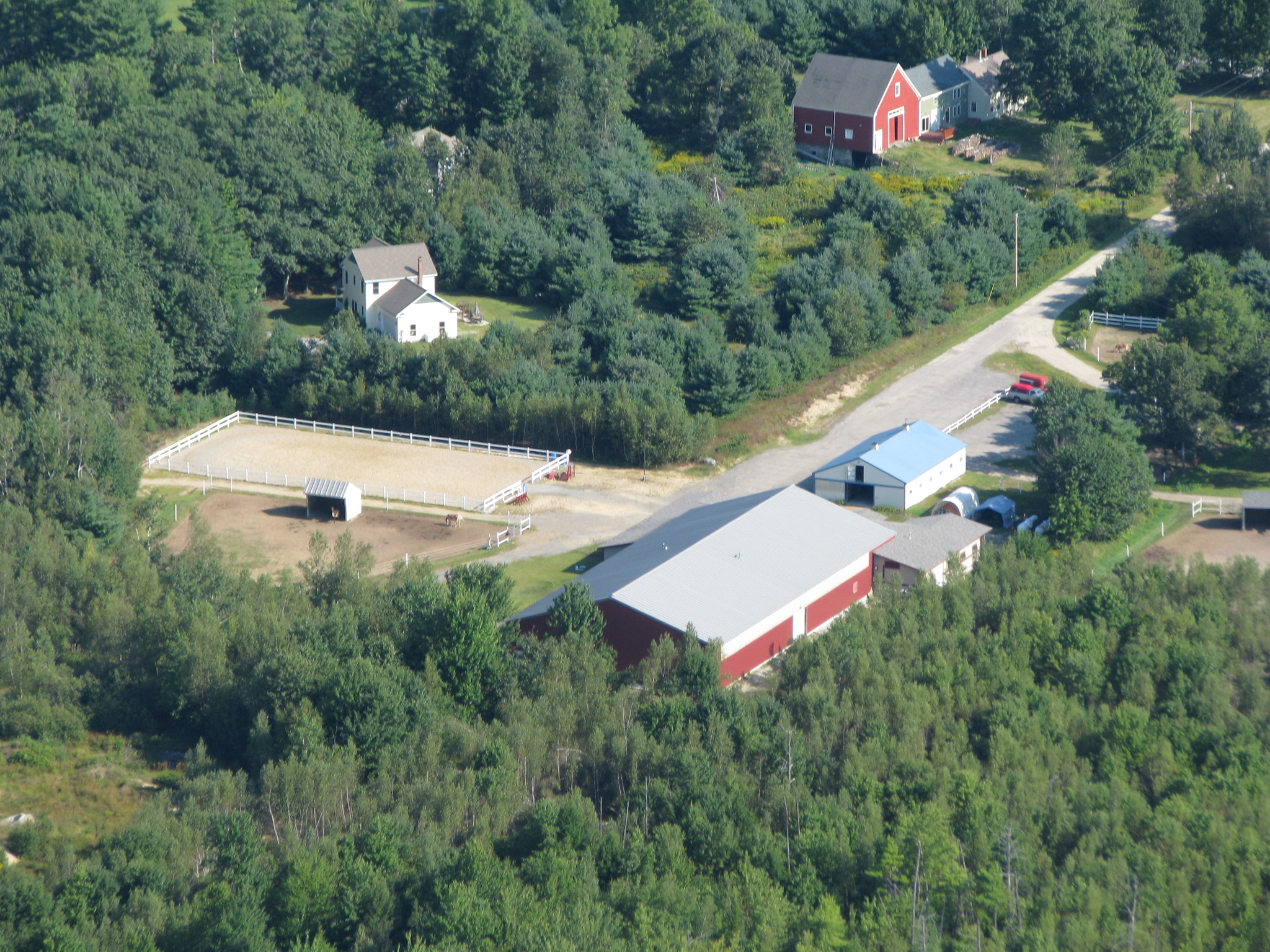
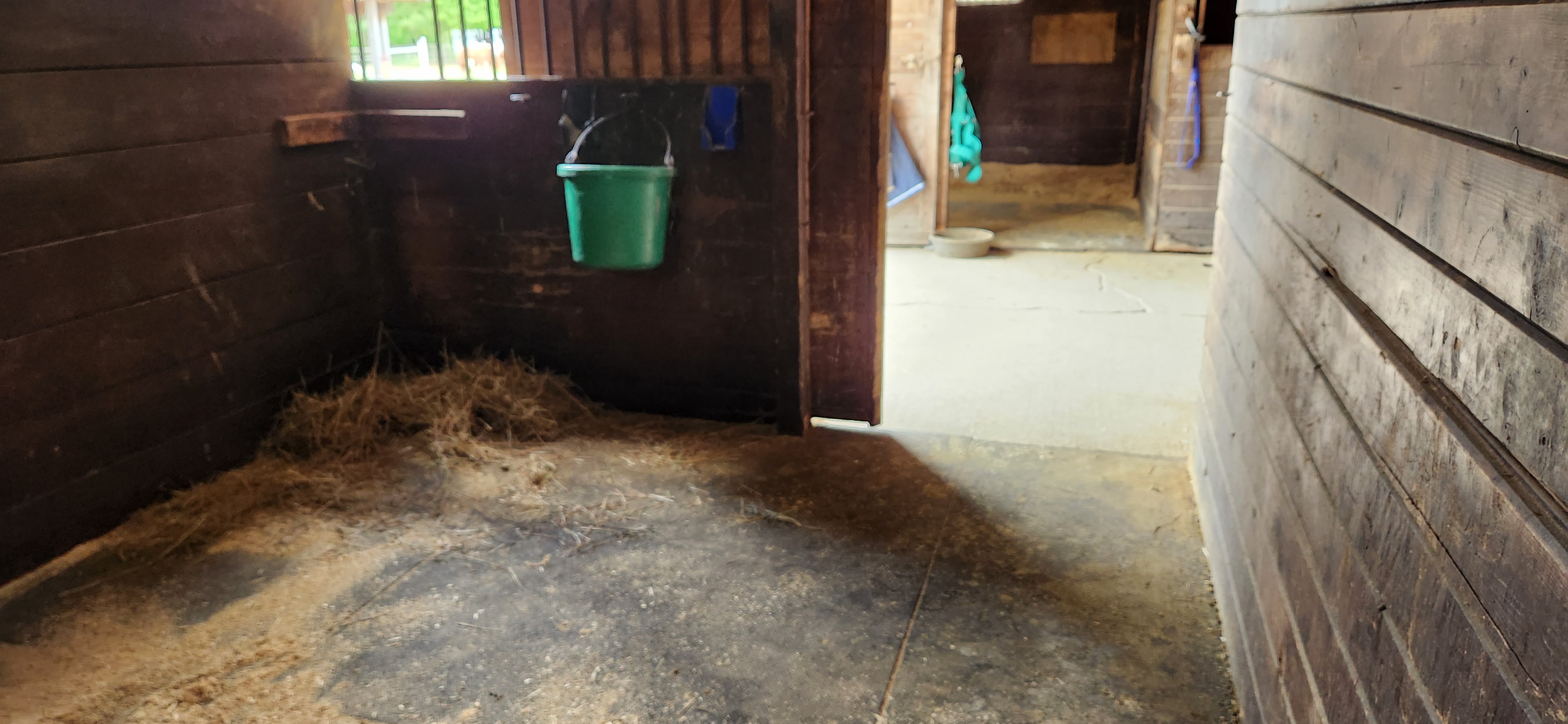
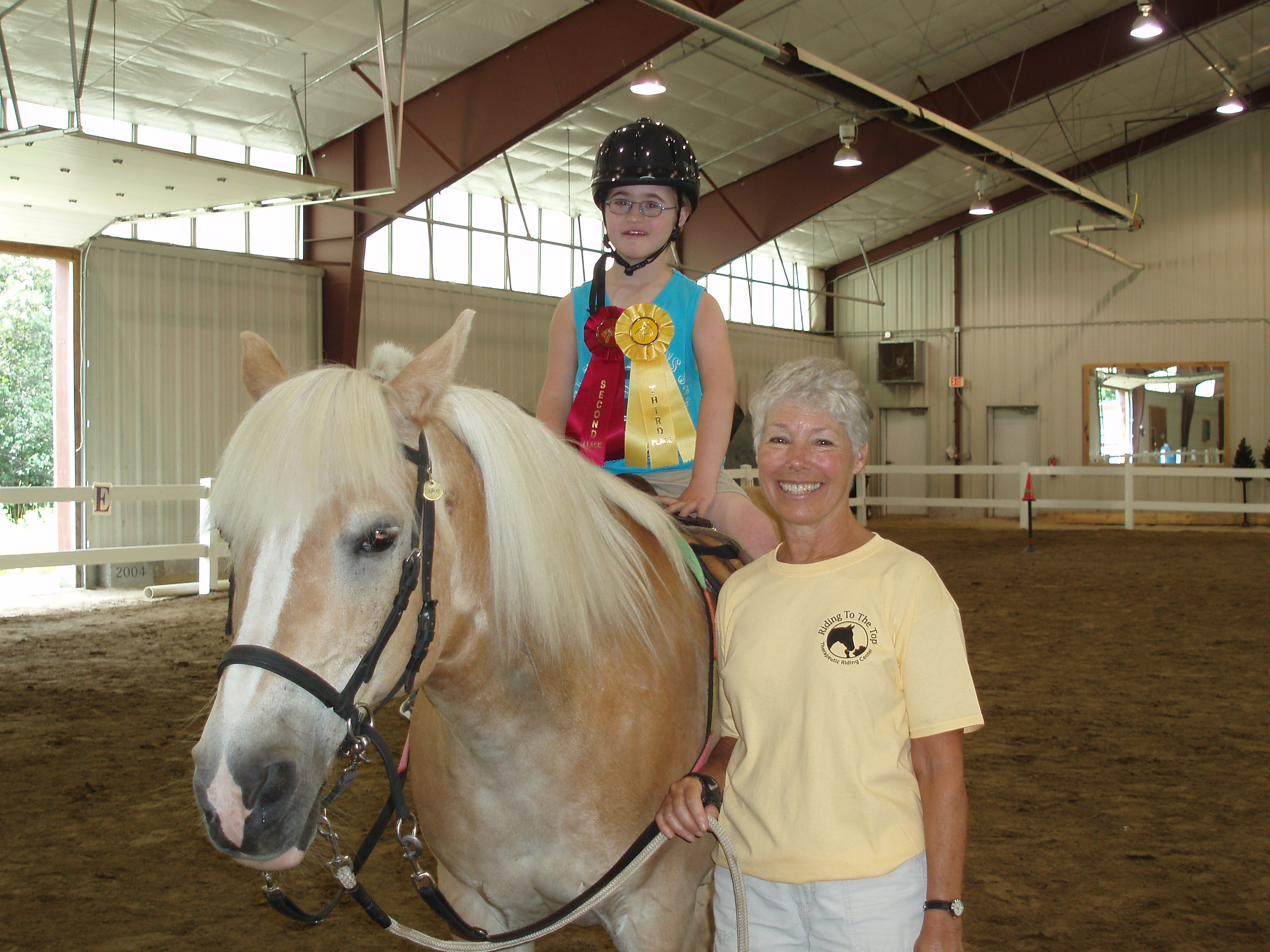
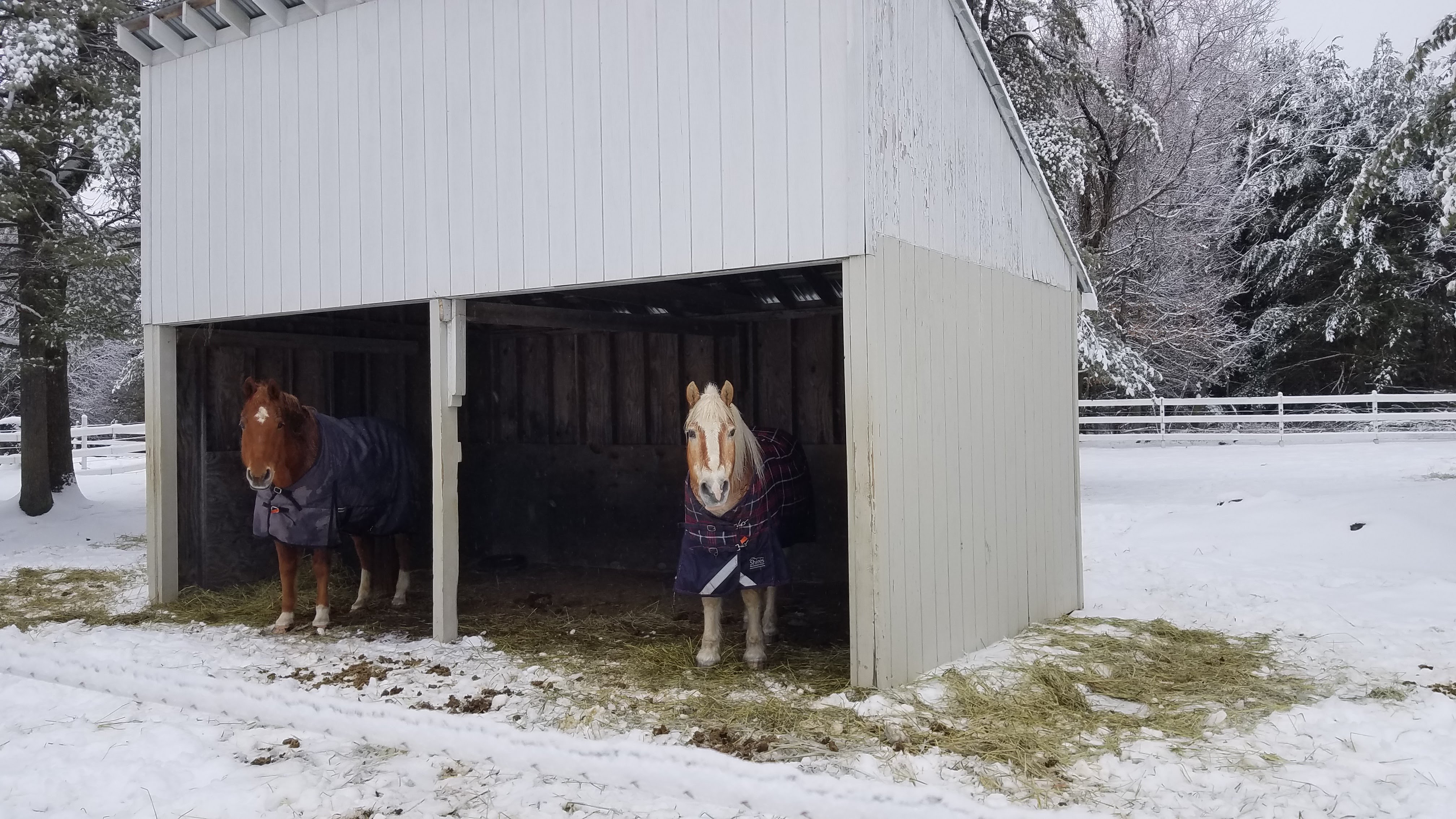

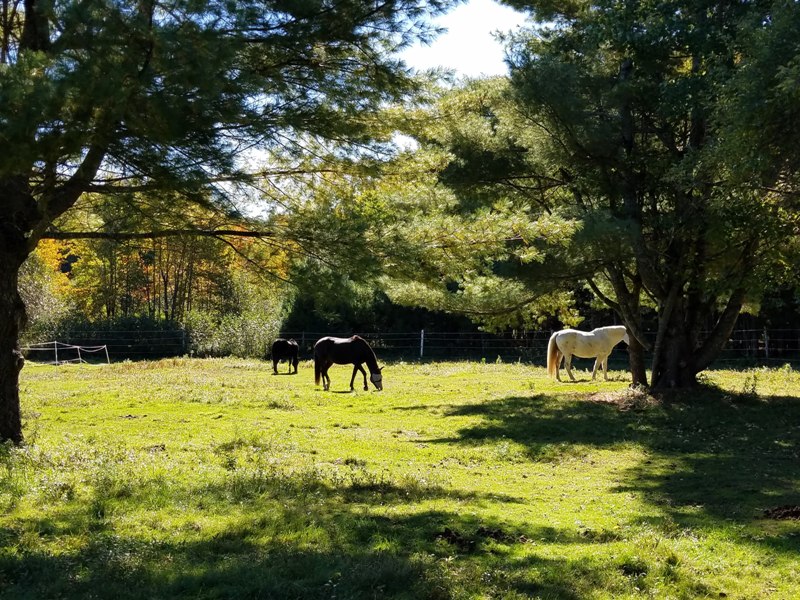
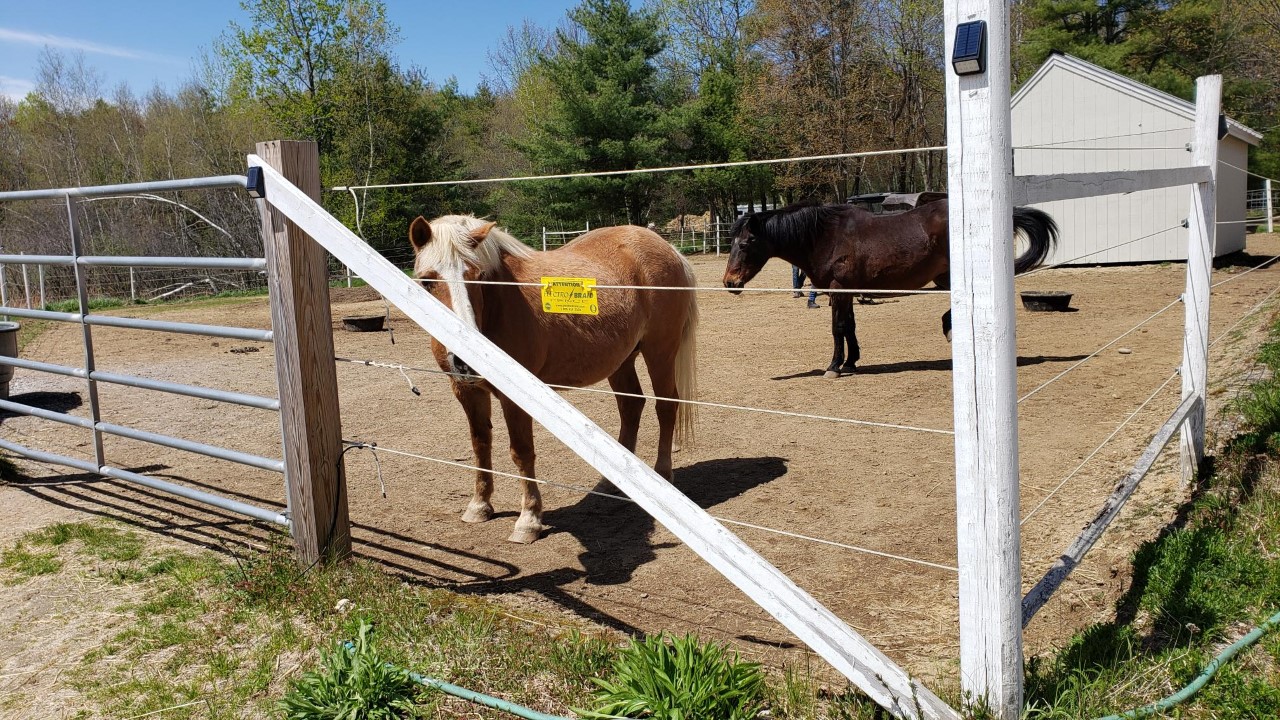


Are the organization's rules, restrictions and warnings (signage) conspicuously posted in easily accessible locations? Yes
Are the organization's emergency contacts, including veterinarian contact information, conspicuously posted in easily accessible locations? Yes
Are human and equine first aid kits easily accessible? Yes
Regarding all shelters where horses are housed including run-in sheds:
Do horses have assigned stalls in the barn/structure(s) or exclusively assigned shelter locations where they are separated from other horses with a barrier? No
How many hours per day, on average, are horses stalled or restricted to these sheltered exclusive shelter locations? 0-3;
How often are the stalls/shelters cleaned, i.e., kept in good repair and free of standing water, accumulated waste, sharp objects and debris? 6-7 Days a Week
Do all stalls/shelters allow horses to lie down, stand up and turn around and provide protection from inclement weather (wind, sleet, rain, snow and extreme temperatures)? Yes
Are stalls/shelters kept in good repair, with adequate ceiling height, and free of standing water, accumulated waste, sharp objects and debris? Yes
Are floors constructed and maintained for both good drainage and traction? Yes
Is there a ventilation and circulation system in place to allow free flow of air to control temperature, and humidity, and to prevent air stagnation? Yes
Is wiring inaccessible to horses and maintained for safety in all areas of facility? Yes
Are fire prevention/protection measures (fire alarms, extinguishers and sprinkler systems) maintained and in good working order? Yes
Is there adequate lighting to ensure safety in all areas of facility? Yes
How many hours per day, on average, are horses turned out:
Equines are out 24/7
Equines are out 24/7 except they are brought in to feed
Equines are out 24/7 except they are brought in if there is inclement weather
Equines are out 24/7 except when they are being trained
Equines are out 24/7 except when they are used for the conduct of the organization's programs
The following describes the pastures at this facility:
A dedicated staff person(s) is responsible for pasture management
All pastures are fenced to prevent escape or injury
Electric fencing is used; electric wires or tape fence are visibly marked
Fencing checks, such as broken or missing planks, loose fence posts, exposed or loose nails, detached wires, etc., are done regularly
Pastures are rotated
Pastures have natural protection for equines (i.e., trees)
Pastures have man-made protection for equines (i.e., shelters)
This facility does not have pastures where equines can graze on pasture grass
This facility has a written plan in place for pasture management, which includes guidelines for seeding, fertilizing, irrigation, mowing, dragging, harrowing, manure removal, removal of debris, the control of poisonous plants, and a schedule for cleaning
Barbed wire is used for fencing
The following describes the turnout areas other than pastures at this facility:
This facility has a written plan in place for the maintenance of turnout areas, which includes a schedule for cleaning, manure removal, and dragging
A dedicated staff person(s) is responsible for the maintenance of turnout areas
All turnout areas are fenced to prevent escape or injury
Electric fencing is used; electric wires or tape fence are visibly marked
Turnout areas have man-made protection for equines (i.e., shelters)
Fencing checks, such as broken or missing planks, loose fence posts, exposed or loose nails, detached wires, etc., are done regularly
This facility does not have turnout areas
Barbed wire is used for fencing
The following policies and procedures are in place at the facility to restrict public access and to keep horses safe:
The property owner, staff member or caretaker lives on the premises and ensures that public access is restricted and is responsible for the security of the facility and equines
There is a practice in place to monitor equines overnight
No Trespassing signs are posted
Hold Harmless signs are posted
Authorized Personnel Only signs are posted
Visitors are only permitted at specific times
Visitors are only permitted in specific areas
The property is fitted with motion lights
A security guard is present at night
By Appointment Only signs are posted.
Entrance gates are locked at night
The property is fitted with a security system monitored by police or a professional service
The property is fitted with a security system that is monitored internally by staff (or the property owner)
The perimeter of the property is fully fenced
Equine Care/Emergency Preparedness: Riding To The Top Therapeutic Riding Center (*Main) 2026 and 2025 This section is required.
Horse Health Care/Barn Management Records: What system is used to collect and store health/horse care records?
Notebook or equivalent (technology not utilized)
Onsite computer with cloud-based backup storage system
The organization utilizes its own system to maintain records
Our organization would use free cloud-based barn management software if available
The following items are consistent with our feed management plan and practices:
Equines are provided with individualized feeding plans, including supplements, according to the equine's age, breed/type, condition, size, work level and any health issues, consisting of nutritious food provided in sufficient quantity and access to adequate natural forage, or be fed daily, or as recommended by the organization's veterinarian
Feed plans are determined in consultation with a veterinarian
Supplement plans are determined in consultation with a veterinarian
Equines are fed grain in individual stalls
Equines are fed grain in groups
Staff and/or volunteers are trained in proper feed measurements and protocols and observed periodically to ensure they are feeding correctly
The feed chart is centrally located and updated as needed
The area(s) where hay, feed, grain, and supplements are stored are kept clean, free of debris and chemicals, and protected from weather and other animals in rodent-proof and mold-proof containers and grain bins
Feed, supplements and hay types are clearly labeled
Water sources, i.e., buckets, troughs, automatic waterers, etc. are kept clean, free of contaminants, debris and chemicals, protected from weather and other animals, and be positioned or affixed to minimize spillage.
Medications are kept in a secure area
Is clean, potable water available at all times for all equines? Yes
Hoof Care: How often is hoof care provided for each equine? Every 4-8 weeks and when an issue arises
Dental Care: How often is dental care provided for each equine? Annually and when an issue arises
Horse checks: How often are equines visually and physically checked by personnel at the facility? Every day or 6 days a week
Our organization has the following parasite and fly/insect control protocols in place, including remedies used to control flies and insects:
Our organization follows the parasite control guidelines of our veterinarian, including fecal testing and de-worming
Fly/Insect Control Remedies:
Fly parasites
Fly Traps and Tapes
Premise Sprays/Insecticides
Fly Spray Repellent
Fly Masks
Fly Sheets
Fans
The following represent the biosecurity practices in place at facility:
Our organization follows the biosecurity guidelines of our veterinarian
Sick, affected and/or quarantined equines do not have contact with other equines or other animals
The organization has a written biosecurity plan
Staff are trained in best practices related to biosecurity
Volunteers are trained in best practices related to biosecurity
A specific individual is trained and assigned to care for sick, affected and/or quarantined equines
Sick, affected and/or quarantined equines are cared for last if the caretaker must also care for healthy equines
Restricted access signs are posted at primary points of access to sick, affected and/or quarantined equines
Hand sanitizers are available at all primary points of access to sick, affected and/or quarantined equines
Footbaths are available at all primary points of access to sick, affected and/or quarantined equines
Manure and bedding from sick, affected and/or quarantined equines is removed from the facility - not put in open air piles, and not spread on pastures
Quarantine areas, such as stalls, aisle ways, paddocks, and common areas, are cleaned (and needed, disinfected) after conclusion of the quarantine.
Trailers/vans used by sick, affected and/or quarantined equines are cleaned and disinfected after each use and cleaning takes place away from where equines are sheltered
Equipment used by sick, affected and/or quarantined equines is not shared
Equipment used by sick, affected and/or quarantined equines is cleaned of organic debris and disinfected after each use
Latex gloves, or equivalent gloves, are worn when working with sick, affected and/or quarantined equines
Equines are not quarantined on arrival.
Additional information on biosecurity:
Any volunteers involved in equine care are trained in biosecurity measures as needed. When horses are in quarantine, their stall and turnout areas are clearly marked as such and staff try to leave quarantined horses to be the last horse touched during a shift and/or fully sanitize following working with quarantined horse(s).
The following represent the manure removal practices in place at facility:
Manure is piled in an area where equines are not located
Manure is hauled, sold or given away
Our organization adheres to the manure management guidelines set by the state, local authorities, and/or our organization's veterinarian
Manure is stored in dumpster(s)
Manure piles are covered
Manure piles are composted or spread on pastures
The following steps are taken to help staff and volunteers readily identify each horse on the property:
Name plates are located on the stall/shelter location
Equines wear halters with nametags
A notebook or binder with photos and information on each equine is easily accessible
A map/diagram is posted showing the location of each equine with equine names and photos
Equine photos and profiles are available on the website
Staff and volunteers are provided with an information packet with equine profiles, including photos and detailed descriptions
Staff/volunteers are provided training on conformation, markings, colors, and breeds
Team leaders work with new staff/volunteers until they are able to identify the equines
Equines are assigned the same exclusive stall/shelter location each day
Photos are located on the stall/shelter location
Our organization has the following policies and procedures in place pertaining to tack, apparel and equipment:
Saddles are shared
Saddle pads are shared
Blankets, sheets and turn out apparel are fitted and utilized for each equine appropriate to the equine's needs and the weather conditions
Blankets, sheets and turn out apparel are cleaned regularly as needed
Riding Tack is always cleaned after each use
Riding Tack is inspected for overall working condition before each use by trained personnel
Riding Tack is assessed for fit before each use by trained personnel
Riding Tack is assessed for fit by trained personnel when an equine's body condition changes
Riding Tack is assessed for fit by trained personnel when an equine's disposition changes
This facility enlists the services of a professional saddle fitter at least once a year
Assigned riding tack is clearly labeled
Riding Tack is stored in a climate-controlled location
Helmets are shared
Helmets are cleaned/disinfected after each use
Helmets are replaced after a fall
Helmets are replaced at least every five years.
All equines have specifically assigned apparel, equipment and tack (saddles/bridles if ridden) that is not shared
Bridles are shared
Bits are shared
Blankets are shared
Sheets are shared
Turnout apparel is shared
Halters are shared
Riding Tack is always cleaned at least weekly
Riding Tack is cleaned only when needed
No equines are ridden; saddles, bridles, etc. not applicable.
Emergency Preparedness: Riding To The Top Therapeutic Riding Center: *Main This section is required.
The following plans, policies, and procedures are in place at the facility to handle emergencies and address weather related issues, fire safety procedures, and/or any additional hazardous scenarios the facility could potentially experience:
Emergency procedures are posted prominently
The facility owns or has access to a generator
The facility maintains at least two weeks of hay, feed, shavings and medications
The facility collects and maintains medical information from staff, volunteers, and clients
The facility maintains appropriate liability and/or workers' compensation insurance
The organization has a written emergency preparedness/safety plan (EPP)
Local fire department and/or the state's emergency planning department procedures
Medical emergencies for clients, staff, and volunteers
Medical emergencies for equines
Evacuation plans
Power outages
Fire
Natural Disasters - thunderstorm, hurricanes, earthquakes, tornados, etc
Protocols to notify emergency personnel
Building/facility exit plans
Terrorist attacks
The facility follows the specific procedures to help PREVENT emergency situations:
Smoking is strictly prohibited
NO SMOKING signs are posted prominently
Permanent or temporary structures where equines are stalled are kept free of dust, cobwebs, trash, cleaning rags, and other flammable items
Aisles and doorways are kept clear
Heaters with automatic shutoff settings are used
Hay is stored away from permanent or temporary structures where equines are stalled
How often are the following checked or performed?
Fire Extinguishers are checked: Quarterly
Smoke detectors are checked: Quarterly
Fence lines are checked: Daily
Turnout Areas are checked: Daily
Sprinkler systems are checked: Quarterly
Fire drills are conducted: Semi-annually
Review of safety protocols with staff are conducted: Quarterly
Review of safety protocols with volunteers are conducted: Quarterly
The Emergency Preparedness Plan is reviewed and updated: Annually
Equine Transportation: 2= Onsite: 2 (2 + 0) + Offsite: 0
2-horse van/trailer with truck:
1 Owned onsite
3-horse van/trailer with truck:
1 Owned onsite
© Copyright 2018 EQUUS Foundation 5 5.00